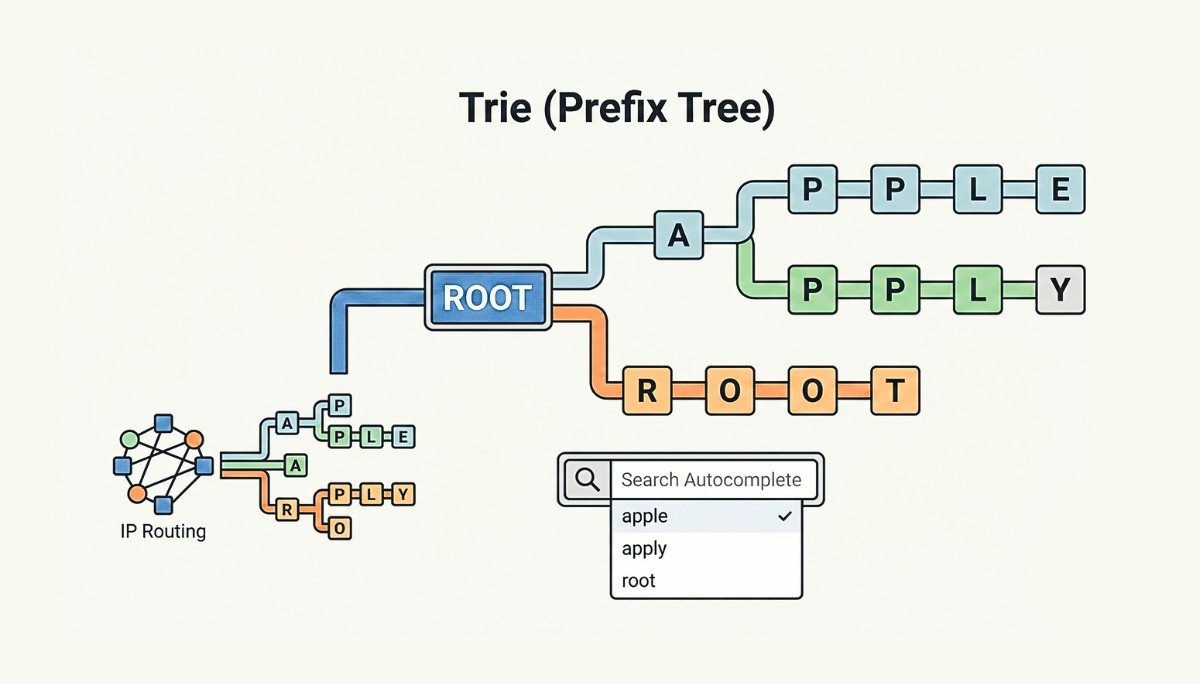How to Convert a String to an Integer (in Python, JavaScript, & More)
By
Liz Fujiwara
•
Aug 12, 2025
Need to convert a string to an integer? This process is a fundamental step in programming that allows you to perform calculations, make comparisons, and manipulate data effectively. Since data often comes in as text or strings, converting these strings into integers is essential for any numerical operations or logical decisions in your code. In this article, we will walk you through the most reliable and efficient methods to convert strings to integers across popular programming languages like Python and JavaScript. Whether you are handling user input, parsing data from files, or working with APIs, mastering these conversion techniques will help you write cleaner code and ensure accurate results every time.
Key Takeaways
String to integer conversion is essential for performing mathematical operations and maintaining data integrity in programming.
Python and JavaScript provide built-in methods, such as int() and parseInt(), for converting strings to integers, with important considerations for error handling and edge cases.
Best practices for this conversion include validating input, using built-in functions appropriately, and implementing exception handling to prevent runtime errors.
Understanding String to Integer Conversion

In programming, converting strings to integers is essential for performing mathematical operations and logical comparisons. Unlike integers, strings cannot be directly used in arithmetic calculations or conditional statements. This makes converting a string to an integer a fundamental task in many coding scenarios, especially when dealing with string data types.
Consider a common situation where user input is collected through a web form. Often, users enter numeric values as strings. To perform calculations or comparisons, these string literals must be converted to valid integer values. This process not only enables arithmetic operations but also ensures data integrity and consistency by properly interpreting the numeric input.
Moreover, when data is read from files or databases, numeric values are often represented as strings. Converting these strings to integers allows developers to process data accurately within their applications. Mastering string-to-integer conversion and understanding the integer data type is therefore essential for any programmer.
Converting Strings to Integers in Python
Python, known for its simplicity and readability, provides straightforward ways to convert strings to integers. The most commonly used method is the built-in int() function, which attempts to parse a string as a base-10 integer.
Using int() Function
The int() function in Python is a versatile tool for converting strings to integers. By default, it parses a string as a base-10 integer. It can also convert from different bases by specifying the base as a second argument. For example, converting a binary string to an integer is as simple as passing 2 as the base. Handling potential errors during conversion is important. Using a try-except block allows you to manage exceptions gracefully, providing a fallback message for invalid inputs.
Consider the following example:
try:
int_result = int("123")
except ValueError:
print("Conversion failed")
This code attempts to convert the string “123” to an integer and catches any potential ValueError, ensuring the program continues to run smoothly even if the conversion fails.
Handling Non-Numeric Characters in Python
Strings with non-numeric characters can cause conversion errors, so implementing checks before conversion is necessary. Python’s try-except block can be used to catch ValueError exceptions when encountering invalid inputs.
For example, converting the string "123abc" with the int() function raises a ValueError. To handle such cases, you can:
First, verify if the string contains only numeric characters using string.isdigit()
If the string is numeric, convert it to an integer using int(string)
Otherwise, print "Invalid input"
This approach helps prevent runtime errors and ensures only valid strings are converted.
Example code:
string = "123abc"
if string.isdigit():
int_result = int(string)
else:
print("Invalid input")
This approach ensures that only valid number numeric strings are converted, preventing runtime errors and maintaining data integrity.
Converting Strings to Integers in JavaScript

JavaScript, a language renowned for its flexibility in web development, provides multiple methods to convert strings to integers. The parseInt() method and the Number() function are two primary tools for this purpose.
Using parseInt() Method
The parseInt() function in JavaScript is a powerful tool for converting strings to integers. It reads a string and converts it to an integer, allowing for an optional radix parameter to specify the numeric base. This flexibility makes parseInt() suitable for a wide range of conversion needs, from decimal to hexadecimal numbers.
The following code snippet demonstrates using parseInt() with a radix:
let number = parseInt("1010", 2); // Converts the binary string "1010" to the integer 10
However, parseInt() stops parsing at the first non-numeric character, which can lead to unexpected results.
Using Number() Function
The Number() function in JavaScript offers a straightforward syntax for converting strings to integers. Unlike parseInt(), Number() converts the entire string and returns NaN if any part is non-numeric. This method is particularly useful when you need a strict conversion without partial parsing.
Consider the following example:
let num = Number("123"); // Converts the string "123" to the integer 123
Number() ensures that the entire string is evaluated, resulting in a more consistent conversion process.
Dealing with Edge Cases in JavaScript
Handling edge cases like empty strings or strings with non-numeric characters is crucial when converting strings to integers in JavaScript. These scenarios can lead to unexpected results, such as returning NaN or 0. For example, converting an empty string with Number() will return 0, while parseInt() will return NaN for strings with non-numeric characters. Being aware of these edge cases and implementing proper checks helps ensure robust and reliable string-to-integer conversions.
Converting Strings to Integers in Other Languages

String to integer conversion is a common requirement across various programming languages. Let’s explore how C#, Java, and C++ handle these conversions, each offering unique methods and error-handling approaches.
C#: Using Parse() and TryParse() Methods
In C#, the int.Parse() and int.TryParse() methods provide robust solutions for string to integer conversion. The int.Parse() method converts a string to an integer but throws an exception if the conversion fails. On the other hand, int.TryParse() attempts the conversion and returns a boolean indicating success or failure, making it a safer alternative.
For instance:
int number;
bool result = int.TryParse("123", out number);
if (result)
{
// Conversion succeeded
}
else
{
// Conversion failed
}
TryParse() ensures your program handles invalid inputs gracefully without crashing.
Java: Using parseInt() Method
Java uses the Integer.parseInt() method to convert strings to integers. If the string does not represent a valid integer, this method throws a NumberFormatException. To handle such errors, it is common to use try-catch blocks, which help prevent the program from crashing and allow for graceful error management.
For example:
try catch block {
int number = Integer.parseInt("123");
} catch (NumberFormatException e) {
System.out.println("Conversion failed");
}
This method ensures any invalid inputs are caught and managed appropriately, preventing runtime errors.
C++: Using stoi() and atoi() Functions
In C++, the stoi() function is used to convert strings to integers, offering type safety and built-in exception handling for invalid inputs. In contrast, the atoi() function converts C-style character arrays or string literals to integers but does not provide type safety or error checking, which can result in undefined behavior if the input is not a valid number.
For instance:
try {
int number = std::stoi("123");
} catch (const std::invalid_argument& e) {
std::cout << "Conversion failed: " << e.what() << '\n';
}
Stoi() ensures that invalid inputs are caught, providing a safer conversion process.
Common Pitfalls in String to Integer Conversion

String to integer conversion can come with challenges such as non-numeric input, overflow errors, and handling edge cases. Being aware of these common issues is essential to ensure accurate and reliable conversions.
Handling Null or Empty Strings
One significant pitfall is attempting to convert null or empty strings, which can cause runtime errors. It is important to check if the string is null or empty before conversion. For example, in C#, you can use the String.IsNullOrEmpty method to prevent such errors:
if (!String.IsNullOrEmpty(inputString))
{
int number = int.Parse(inputString);
}
Methods like int.TryParse also prevent exceptions and offer a cleaner way to parse integers.
Managing Large Numbers
When converting strings to integers, large numeric values can exceed the maximum limit for standard integer types, leading to overflow errors. To handle such cases, it is important to use suitable data types like long or BigInteger in Java.
Additionally, implementing exception handling to catch potential NumberFormatException errors during conversion helps ensure that your program can handle invalid or excessively large inputs gracefully, making the conversion process more robust and reliable.
Dealing with Leading Zeros and Whitespace
Leading zeros and whitespace in strings can affect how numeric values are interpreted. For example, Python’s int() function automatically trims leading and trailing whitespace, which helps ensure accurate conversion.
Similarly, built-in methods like Convert.ToInt32 in C# handle these issues effectively, providing a reliable and consistent conversion process.
Best Practices for String to Integer Conversion

Best practice for string to integer conversion ensures accurate and reliable results. This involves input validation, using built-in methods, and handling exceptions.
Validating Input Before Conversion
Validating input strings before conversion helps prevent errors and maintains data integrity. Some common methods include:
Using str.isdigit() in Python to check if a string contains only numeric characters before converting.
Checking for null or empty strings to avoid runtime errors.
Providing default values or fallback mechanisms to ensure the conversion process remains error-free.
Using Built-in Functions and Methods
Built-in functions and methods help ensure consistent and reliable string to integer conversions. For example, the Convert.ToInt32(String) method in C# is efficient and can prevent overflow errors by allowing the use of suitable data types like BigInteger for handling very large numbers.
Exception Handling Techniques
Try-catch blocks during conversions help handle potential formatting and overflow errors gracefully. Using exception handling to catch FormatException during parsing in C# ensures that conversions are robust and reliable.
Introducing Fonzi: Revolutionizing AI Talent Hiring
Fonzi is revolutionizing the hiring process for AI talent by providing a specialized platform that connects organizations with highly qualified AI engineers. By streamlining candidate evaluation and matching, Fonzi helps companies find the right talent faster and more efficiently, reducing hiring time and improving recruitment outcomes. This platform offers structured assessments, bias reduction, and fraud detection, ensuring a fair and reliable hiring experience for both employers and candidates.
How Fonzi Works
Fonzi uses structured evaluations to thoroughly assess candidates and promote fair hiring practices. During Match Day, companies submit job offers, and candidates choose which interviews to pursue based on those offers, creating a transparent and efficient matching process.
Why Choose Fonzi?
Using Fonzi can significantly reduce the hiring timeline, allowing companies to secure top talent in as little as three weeks. By providing quick access to pre-vetted candidates, it streamlines the recruitment process and cuts down the time spent on sourcing.
Summary
Navigating the intricacies of converting strings to integers across various programming languages is crucial for effective programming. Whether it’s Python’s int() function or JavaScript’s parseInt() method, each language offers unique tools to ensure accurate and efficient conversions. By understanding these methods and adopting best practices like input validation and proper error handling, developers can avoid common pitfalls and ensure their programs run smoothly.
Moreover, in the ever-evolving tech landscape, platforms like Fonzi are revolutionizing the hiring process for AI talent. By providing a structured, efficient, and scalable solution, Fonzi ensures that companies can quickly and effectively connect with top-tier AI engineers. Embracing these innovative solutions can significantly improve your experience with the talent acquisition process, driving success in the tech industry.




